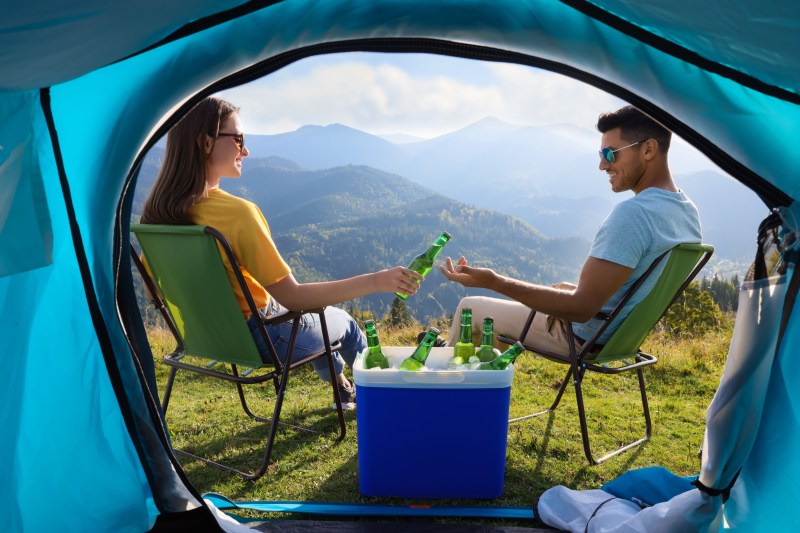
There’s no doubt about it — sleeping outside is a magical experience. That is, sleeping outside should be a magical experience. For a lot of people, it is, but mostly that’s because they have the right gear for the conditions. In general, if you can’t get comfortable out under the stars, it’s for one of three reasons: You’re too hot, too cold, or you’ve put your sleeping mat down on a rock or a tree root and it’s digging into your back.
If you keep putting your sleep mat on rocks and roots, you may need to be more aware of where you’re camping. But if you’re being kept up at night by overheating or a lack of insulation, you might need to rethink your camping sleep system. Your sleep system includes everything that you use to get comfortable overnight, including your sleeping bag, sleep pad, and camping tent — or whatever shelter you prefer. Each of these elements affects your warmth, comfort, and the weight of your pack, and each plays an integral part in your camping experience.
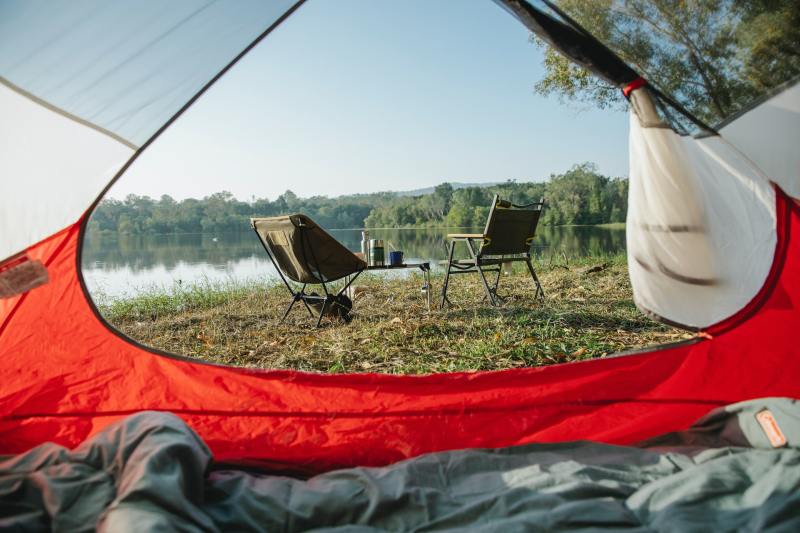
Start with your shelter
Tents
Tents are the most versatile and protective shelter available. Barring a catastrophe, a quality camping tent will protect you against even the roughest weather. When you’re buying your camping tent, be sure to get one appropriate for the season. If you’re camping in summer, you’ll need ventilation; if you’re camping in the winter, you’ll need a robust setup.
Remember that your tent size also affects warmth. A larger tent might give you more space, but in the winter months, that’s a lot more cool air your body is going to be trying to warm around you. Larger tents are better suited to summer months and car camping, while most backpacking tents are tighter on space, but stow away easily to be carried long distances.
Hammock
Get it right and a camping hammock can be the most comfortable way to sleep. Get it wrong and you can be cold, wonky, and potentially soaked through. Most campers reserve their hammocks for the summer months, where a cool breeze is a welcome relief from the stuffy tent. If you’re a real hammock convert, you can keep it swinging all year round with the addition of a hammock underquilt and a sleeping bag rated for colder temperatures.
Tarp
There are loads of different ways you can make a tarp shelter, from creating a canopy to go above your hammock to building a freestanding, tent-like structure. Tarps are often lightweight and versatile but lack the extra insulation and strength that you get from a tent. If you’re going to bivy out under a tarp, it’s probably a good idea to have a slightly warmer sleeping bag and a quality sleep pad, as you’re possibly going to be in direct contact with the ground.
Bivy bag
Bivy bags are about as minimalist as you can get. If you’ve not experienced one before, it’s like a large waterproof sleeping bag that you load up your sleeping pad and sleeping bag inside and climb into. This is some no-frills type of camping, and these bags are usually used by trekkers and thru-hikers who want to minimize weight and who are camping for rest rather than relaxation. Even the most breathable bivy bags often generate condensation, so they’re better suited to synthetic sleeping bags rather than down insulation.
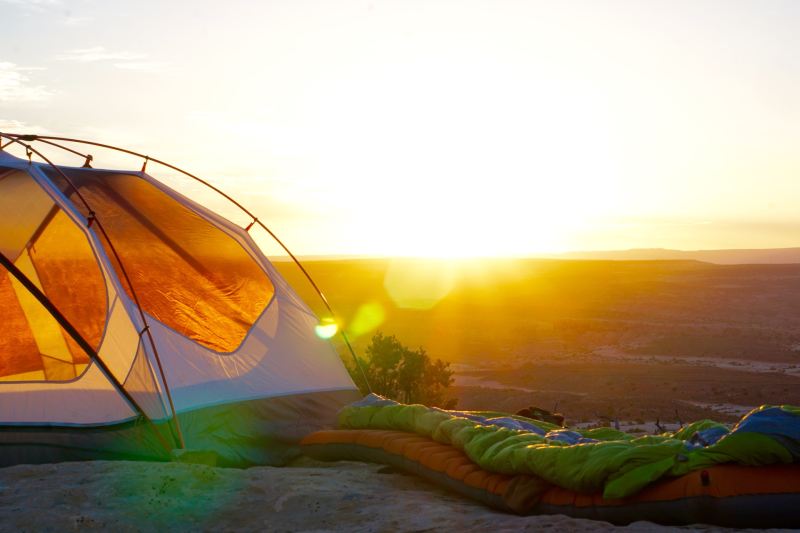
Start from the ground up
Even wrapped in the best sleeping bag, you’re going to lose a lot of body heat to the ground. This is because the insulation underneath you gets squashed and can’t loft, which is an essential part of trapping warm air. For this reason, you need to get yourself a mattress to keep you off the ground. In the summer months, you might be able to prioritize comfort over insulation, but as the weather cools down, you need to know you will stay warm.
Air mattress
If you’ve got the space and you’re all about comfort, an air mattress can make your camping setup feel like a home away from home. A little like a large tent, air mattresses hold a lot of air and can cool down overnight, leaving you lacking insulation. These air mattresses suit car camping and recreational or family experiences, but when it comes to carrying your gear farther afield or camping in cooler climates, you’re going to need something else.
Foam pad
Camping sleeping pads don’t have to be expensive. Even cheap foam pads offer a reasonable level of insulation without adding a lot of weight to your setup. These foam pads may not be as insulated or as comfortable as an inflatable pad, but they’re hard-wearing and can’t puncture, making them a great choice on rough ground or in a survival camp. Their affordability also makes them popular for families or campers just starting out.
Inflatable pad
Inflatable sleeping pads are usually seen as the gold standard. They offer high levels of insulation and pack down to around the size of a water bottle or smaller. The most insulated pads also have a core or fill — usually either foam or down insulation — and this traps even more warm air to stop you from losing too much heat to the ground. It may come as no surprise that these are the most expensive style of sleeping pad and can easily run to hundreds of dollars, the most expensive being the lightest and best insulating.
R-value
Sleeping pads are rated with an R-Value — between 1 and 7 — that shows how warm it is. The higher your R-rating, the more insulation your pad will offer.
- R1 – R2 – Summer sleeping pad for warmer weather
- R2 – R4 – Three-season sleeping pad for spring and fall
- R4 -R 6 – All-season sleeping pad for year-round use
- R6+ – For use in extreme cold
When you buy your sleep pad, ensure the R-Value matches your requirements.
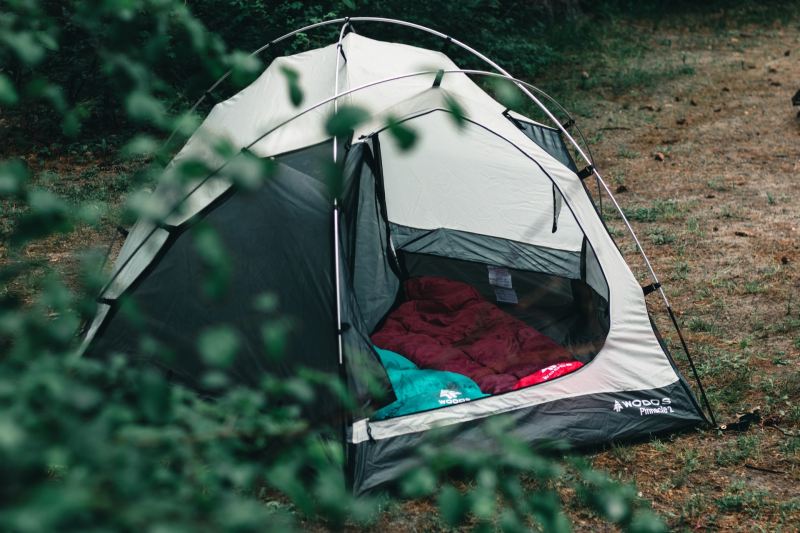
Get cozy, but don’t overheat
Sleeping bag
Most campers will choose a sleeping bag as their chosen form of insulation. Sleeping bags are rated for different seasons depending on their insulation levels.
- 1 Season – Best suited to indoor use or very warm summer nights out
- 2 Season – For use between late spring and early fall
- 3 Season – Can be used from early spring into late fall, usually seen as the most versatile sleeping bag.
- 4 Season – Winter use in snowy and icy conditions
- 4+ Season – Extreme cold weather and high-altitude use
A sleeping bag with too low a rating will leave you cold and uncomfortable, while a sleeping bag with an unnecessarily high rating will see you sweating it out while you try to sleep.
Camping quilts
If you want an alternative to a sleeping bag, why not try the underrated camping quilt? Unlike the heavy quilt you have at home, camping quilts are ultralight and use similar insulation — and therefore rating systems — to sleeping bags. Quilts are popular in the summer months when you can throw them off if you overheat but wrap up when the temperature drops in the early hours of the morning.
Quilts are best suited to hammocks, where wrestling your way into a sleeping bag can be treacherous. They’re also great for campers using air beds who want to feel like they’re at home. Most bivy users, or those sleeping outside under a tarp, will benefit from the wraparound protection of a sleeping bag, though, and a quilt is likely to leave you with an unwanted cold breeze finding its way in overnight.
Sleeping bag liner
Don’t forget your sleeping bag liner. These lightweight liners can add up to 32 degrees of extra warmth to your setup in colder weather, or they can be used as ultra-lightweight sleeping bags in really warm months. They also protect your sleeping bag from grime so that it keeps insulating you properly for years to come.
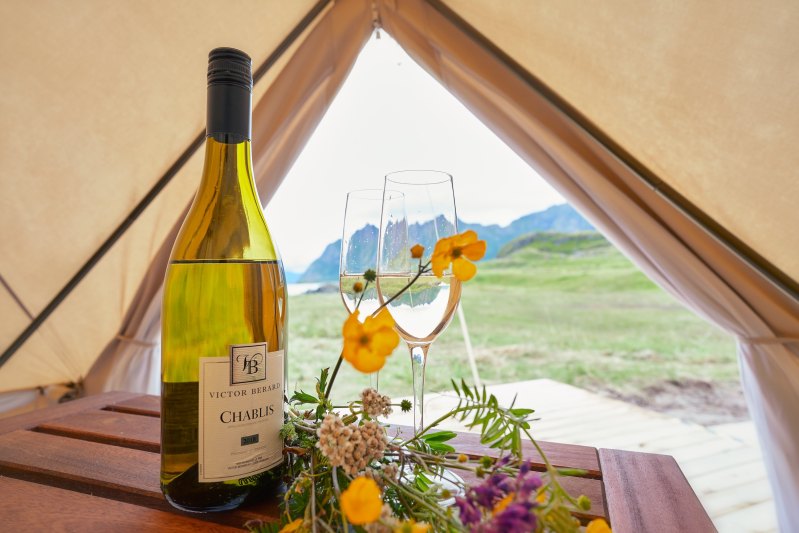
Special considerations for summer camping
Summer camping brings its own unique challenges and considerations. While warmer temperatures may make it seem like sleeping comfortably is a breeze, there are still important factors to keep in mind to ensure a pleasant and restful experience. Here are some special considerations for summer camping:
Ventilation is key
When camping in the summer, proper ventilation becomes crucial. As the temperatures rise, you’ll want to ensure that your shelter, whether it’s a tent or hammock, allows for adequate airflow. Look for tents with mesh panels or windows that can be opened to promote cross-ventilation. A well-ventilated shelter will help prevent condensation and keep you cool during hot nights.
Choose lightweight and breathable materials
In hot and humid conditions, it’s essential to choose camping gear made from lightweight and breathable materials. Opt for sleeping bags and quilts that have moisture-wicking properties and are designed for warm weather use. Look for sleeping pads or mattresses with built-in ventilation channels to enhance air circulation and provide a cooler sleeping surface.
Consider bug protection
Summer camping often means dealing with pesky insects such as mosquitoes and flies. To ensure a peaceful night’s sleep, consider investing in bug protection measures. Look for tents or hammocks with integrated bug netting or consider using a standalone bug net to create a protective barrier around your sleeping area. Additionally, packing insect repellents or mosquito nets can help keep bugs at bay.
Adapt your sleep system
During summer camping trips, you may need to adjust your sleep system to optimize comfort. Choose sleeping bags or quilts with lower temperature ratings to prevent overheating. If using a sleeping bag, consider unzipping it partially or using it as a quilt for better ventilation. You may also want to switch to a lighter sleeping pad or mattress to avoid excessive insulation and promote airflow.
Take advantage of natural cooling methods
Take advantage of natural cooling methods to beat the summer heat while camping. Set up your shelter in shaded areas whenever possible to avoid direct sunlight. If camping near water bodies, such as rivers or lakes, consider placing your shelter closer to benefit from the cooling effect of the breeze. Utilize portable fans or battery-operated cooling devices if desired.
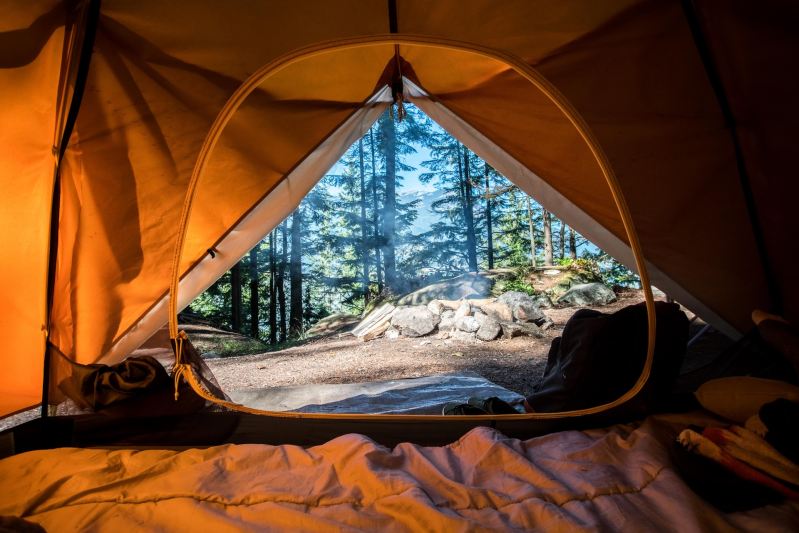
Make it match or mix it up
With so many options to choose from, you can make your sleeping system entirely your own. Either match up your seasons to get the optimal performance from your equipment or use the variety of choices available to your advantage. If you only have one sleeping bag at hand, you can match it with different sleeping pads, tents, or even a hammock to use it in different seasons without overheating or getting cold overnight.
Next time you’re packing for a camping trip, remember that your sleep system requires more than just a warm sleeping bag. Think about how your gear is all going to work together, try out different combinations, and find what works for you. When you know your gear like the back of your hand, you can look at the weather forecast and pick out all the right bits of your setup to make sure you sleep as comfortably as possible on your night under the stars.



